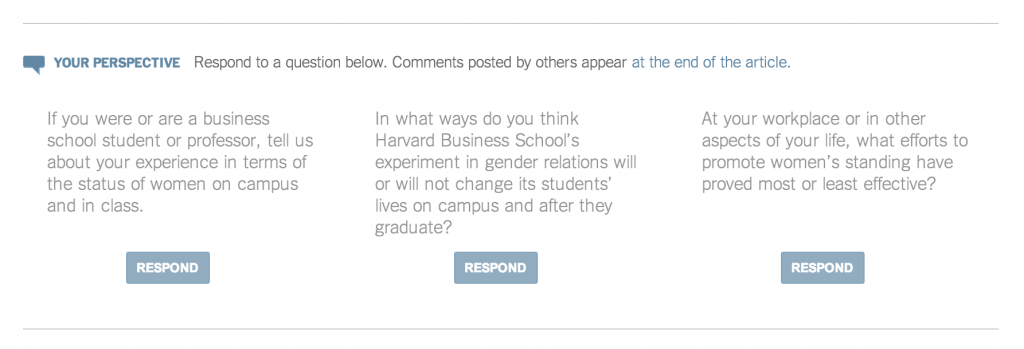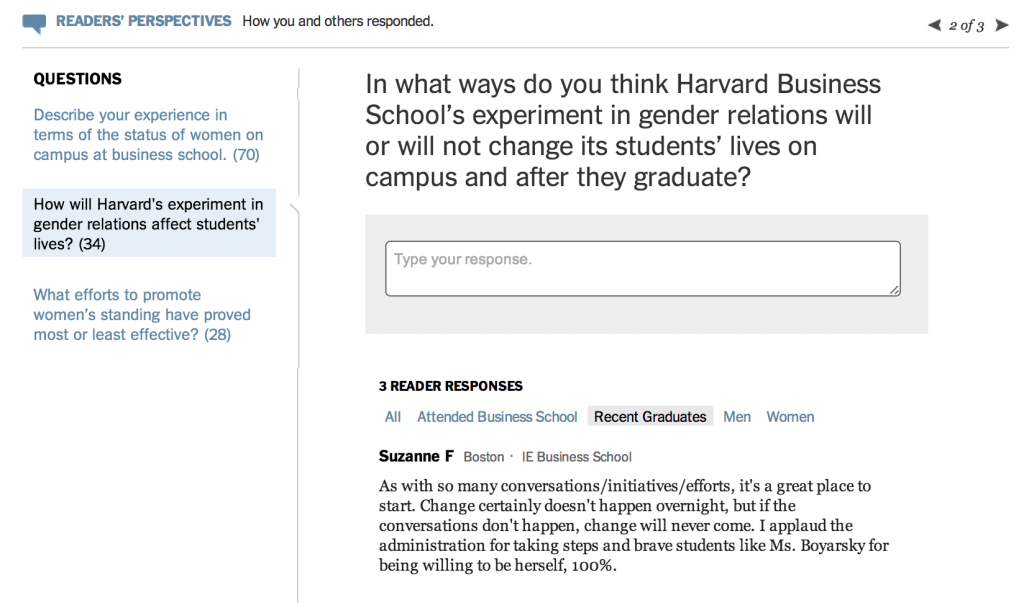Articles about the complex issues affecting women in the workplace are lightning rods for impassioned conversation. This New York Times article on gender equity at Harvard Business School was bound to elicit strong opinions, just like the original 2003 Opt Out Revolution piece and its 2013 sequel (spoiler alert: damned if you do, damned if you don’t). [tweetable hashtags=”#content”]How can editors ensure thoughtful conversation and minimize ad hominem, all-caps outrage?[/tweetable]
Midway through the HBS article, the Times article introduces a full-width block with three specific questions to respond to:
It’s an Oprah’s book club type of approach, with an entire section of questions for readers to consider. Rather than a mass call for comments, it’s a prompt for directed discussion. The mid-way through placement is smart, giving readers questions to consider as they (presumably) finish the piece. Mid-stream blocks with calls to action can be surprisingly successful. Analytics pros will be taking a hard look at the comments originating with a click here versus those starting from the text block at the bottom.
There’s a nice segmentation of the comments at the bottom, where you can read the comments not only by question but by author: all, business school alumni, recent graduates, men, and women. Again, the questions remain highly visible at left and up top.
Previously, I took a look at the rising use of annotation — here’s a good example of an annotated piece on opting-out at Medium. These are all valiant swings at a pernicious, unsolved problem: how to benefit from the wisdom of the crowd while keeping comments from devolving into an angry lowest common denominator? The article on the HBS gender equity experiment will no doubt put this approach to the test.



No comments yet.